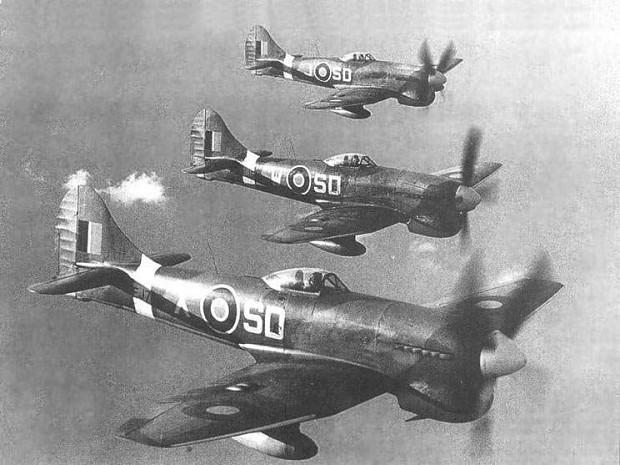Aircraft Lovers Group
Hobbies & Interests
This group is open to everyone who likes any kind of aircraft
The Hawker Tempest was a British fighter aircraft primarily used by the Royal Air Force (RAF) in the Second World War. The Tempest was an improved derivative of the Hawker Typhoon, intended to address problems with the Typhoon's unexpected low performance by replacing its wing with a much thinner laminar flow design. It emerged as one of the most powerful fighters used during the war.
The Tempest V was in the hands of operational squadrons by April 1944; 3 Squadron was the first to be fully equipped, closely followed by 486 (NZ) Squadron (the only Article XV unit to be equipped with the Tempest during the Second World War). A third unit—56 Squadron—initially kept its Typhoons and was then temporarily equipped with Spitfire IXs until sufficient supplies of Tempests were available.[32][nb 6] By the end of April 1944, these units were based at RAF Newchurch a new "Advanced Landing Ground" (ALG), where they formed 150 Wing, commanded by Wing Commander Roland Beamont. The new Wing was part of the Second Tactical Air Force (2nd TAF).
Most of the operations carried out by 150 Wing comprised high-altitude fighter sweeps, offensive operations known as "Rangers" (long-range sorties inside enemy territory, specifically to attack ground vehicles) and anti-shipping reconnaissance. In June 1944, however, the first German V-1 flying bombs were launched against London and the Tempest's excellent low-altitude performance made it one of the preferred tools for dealing with the small fast-flying unmanned missiles. 150 Wing was transferred back to the ADGB, where the Tempest squadrons racked up a considerable percentage of the total RAF kills over the flying bombs (638 of a total of 1,846 destroyed by aircraft).






